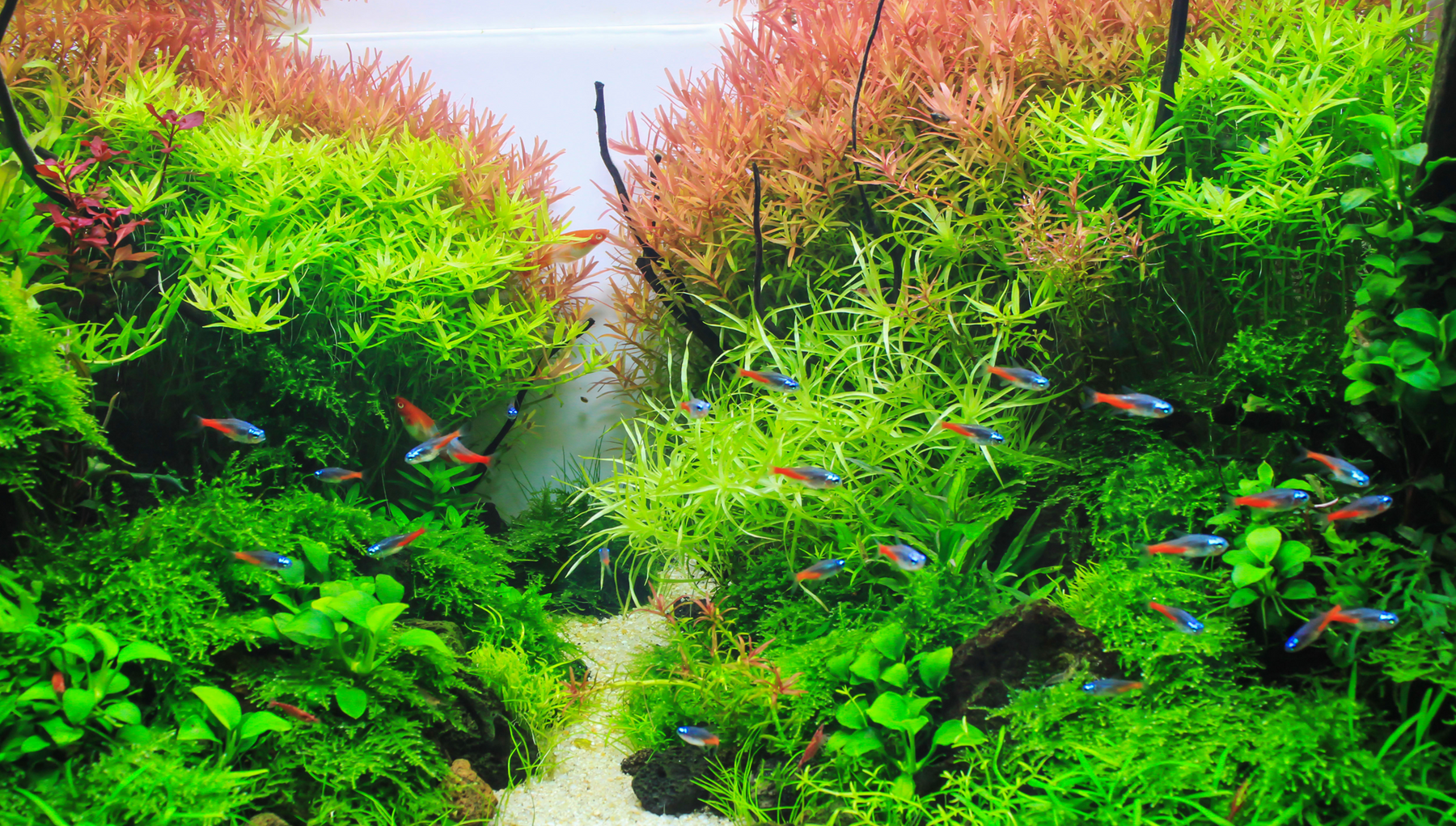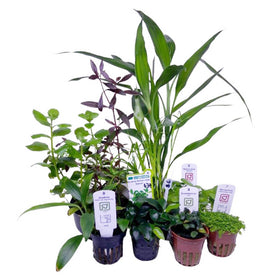FOR ORDER ABOVE SGD100

Getting Started with Aquarium Plants
The decision to incorporate live plants into your aquarium is a fun activity that will transform your tank from a simple fish habitat into an ecosystem. These living plants do more than offer visual appeal; they replicate the natural environments of your aquatic inhabitants, providing a more holistic and enriched life for them. This guide will walk you through the essentials of choosing, introducing, and nurturing these natural wonders in your aquarium. Whether you are a beginner or a seasoned aquarist, adding live plants to your aquarium can significantly elevate the health of your fish tank and its visual appeal.
Preparing Your Aquarium for Plant Introduction
Starting your journey into planted aquariums begins with a careful assessment of your current tank setup. It's essential to consider the potential interactions between your existing fish and the aquatic plants you plan to introduce. Some Characin species have a tendency to eat plants, which could pose a challenge. Additionally, specific Cichlid species, known for digging in substrates, can inadvertently uproot plants, while larger Pleco species might damage them during their regular activities. Given these factors, you may need to carefully select plant species that can coexist with your fish. After this evaluation, choosing the right substrate becomes your next important task.
Selecting the Right Substrate for Plant Growth
Choosing the correct substrate is crucial in setting up a planted aquarium. It's not just about the physical support for plant roots but also about ensuring the substrate can provide or facilitate the necessary nutrients for plant growth. Some aquatic plants thrive in rich, loamy substrates, while others do well in more gravel-like environments. This decision influences not only the health of your plants but also affects water chemistry and, in turn, the overall well-being of your aquarium. Once you've established a solid foundation with the appropriate substrate, the next crucial aspect to address is the balance of light and CO2, which plays a significant role in the health and vibrancy of your aquatic plants.
Balancing Light and CO2 in Planted Aquariums
The interplay between light and carbon dioxide (CO2) in a planted aquarium is a delicate balance that directly impacts plant growth and health. Appropriate lighting is essential for photosynthesis, but its effectiveness is closely tied to the availability of CO2. Each plant species has unique lighting needs, and understanding these requirements is key to preventing issues like algae growth. Similarly, CO2 levels must be carefully regulated to match your lighting conditions, ensuring that your plants receive enough of it for optimal growth without adversely affecting your livestock. Mastering this balance contributes to a stable and flourishing aquatic ecosystem.
Water Parameters and Plant Health
In planted aquariums, the well-being of both plants and fish hinges on maintaining optimal water quality. Thriving aquatic plants play a pivotal role in this balance, effectively absorbing nitrates and thus helping to stabilise water conditions. This absorption creates a healthier environment for all inhabitants and prevents the common issues associated with high nitrate levels. However, it's important to note that dying plants can have the opposite effect, potentially degrading water quality as they decompose.
To ensure a healthy environment, regular testing of water parameters is a must. Using test kits to monitor pH, hardness, nitrate levels, and other key metrics is essential. This ongoing assessment allows for adjustments to be made to maintain the ideal conditions conducive to plant growth and fish health. Keeping these parameters within an optimal range supports the plants in performing their vital role in the ecosystem. Proactive water quality management, facilitated by regular testing and adjustments, is integral to sustaining a thriving and visually appealing planted aquarium.
Use Good Aquatic Plant Fertiliser
Aquatic plants do more than enhance the aesthetics of an aquarium; they're integral to its ecosystem. While these plants benefit from the nitrification process and utilise some nutrients from fish waste, they often require additional nutrients to thrive. Essential elements like Phosphorus, Potassium, Boron, and Manganese are crucial for their growth and health, yet they might not be sufficiently available in your tank naturally.
To address this, aquatic plant fertilisers, available in both liquid and tablet forms, are specifically formulated to supply these nutrients in balanced concentrations. Liquid fertilisers are great for uniform distribution, while tablets can directly nourish the plant roots in the substrate. Using the right fertiliser ensures your plants get what they need, leading to a healthier and more vibrant underwater environment.
Start with Aquarium Plants Suited for Beginners
Here are some of the easiest aquarium plants for beginners to keep. We recommend these three types because they are some of the easiest to manage:
- Echinodorus – Also known as the Amazon Sword, this is a species of aquatic plant that gets most of its nutrients from the substrate. For Echinodorus to thrive, you will have to add extra nutrients in the substrate.
- Anubias – Anubias require little light, is slow growing, and does not require fertilisers to be added to the tank. A very hardy aquarium plant with little to no requirements, the Anubias is perfect for beginners.
- Cryptocorynes – Also known as Crypts, this is another easy aquarium plant to keep. Like Amazon Swords, Cryptocorynes is very forgiving in terms of caring for it and makes for a beautiful foreground or midground aquatic plant in your home aquarium.
Enjoy the Natural Beauty of Aquatic Plants
Having aquatic plants in your aquarium is more than an aesthetic choice; it’s a step towards enhancing the overall health of your aquatic environment. These plants play a significant role in aiding water purification and provide a natural setting for your fish and other aquatic invertebrates such as freshwater shrimp.
Firstly, it’s important to select plants that align with your aquarium’s specific conditions and are compatible with your tank’s denizens. This careful selection helps maintain a balanced ecosystem, where plants and livestock support each other's well-being. Additionally, equipping yourself with knowledge about plant care and the correct tools and equipment for aquascaping is vital. Effective care promotes plant growth, which in turn positively impacts the health and aesthetics of your aquarium.
Here at East Ocean Aquatic, we are committed to guiding you through this process. Whether you’re a beginner or looking to diversify your planted tank, our expertise is geared towards helping you make informed choices. We aim to assist you in cultivating a thriving, dynamic aquatic environment, where your efforts lead to a beautifully balanced aquarium.

